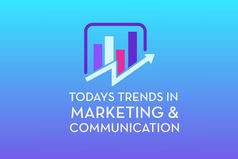
Comunicación, Marketing & Diseño
communication
communication
MARKETING
& DESIGN
Tailored to our clients



Each of our clients is unique, and that's what excites us.
We understand that true magic happens when communication turns into collaboration. That's why we take the time to listen and strive for the best results.
What solution do you need?




WEB DESIGN / DESIGN / COMMUNICATION / PRODUCTION MANAGEMENT /WEB DESIGN / DESIGN /COMMUNICATION /GOOGLE ADS /EMAIL MARKETING/ CAMPAIGNS / PRODUCTION MANAGEMENT
WEB DESIGN / DESIGN / COMMUNICATION / PRODUCTION MANAGEMENT / WEB DESIGN / DESIGN /SEO /EMAIL MARKETING / WEB DESIGN / DESIGN / COMMUNICATION /BRANDING / SOCIAL NETWORKS
Institutional - Ecommerce - Courses - Events - Restaurant - Hospitality - Art Gallery - Professional services - Blog
Web design


Creative solutions, with design, technology and strategy
We possess the engine of large agencies with the fresh and agile spirit of a boutique Studio, creating a unique combination to propel your project towards success.
Categorías de competencia
-
Sitio web de Portfolio: muestre su marca personal, muestras de sus trabajos y currículum digital.
-
Sitio web de E-commerce: cree una tienda en línea con productos, materiales de marketing y estrategias de ventas.
Premios y oportunidades
-
1er lugar: premio en efectivo de U$ 2.000
-
2do lugar: premio en efectivo de U$ 500
-
3er lugar: premio en efectivo de U$ 250
-
Consideración exclusiva para el Wix Campus Accelerator & Wix Innovation Hub.
-
Reconocimiento de la industria.
Projects Completed
500
+
Wix online sites
100
+
Services offered
+
20

No matter where you are on the planet.
We love working with everyone.
Today we have clients in:
NORTH AMERICA
· Miami, FL
· Denver, NV
· Los Angeles, CA
· New Orleans, LA
· San Antonio, TX
LATAM
· Mexico
· Costa Rica
· Panama
· Ecuador
· Colombia
· Peru
· Chile
· Bolivia
· Paraguay
· Uruguay
· Argentina
EUROPE
· Spain
· UK
· Switzerland
. Italy
ASIA
-Israel
We don't like to talk about ourselves, that's why our clients speak for us






Our Partners
We work and train with the best in the industry
Take a look
to our Instagram @estudiocks
From time to time,
we write in our blog

Stay informed with the latest trends in the market
I want to join LATAM News
We work listening to music
and we share it with everyone
Listen to our new Podcast!





















































